| 1 | Western hognose snake |
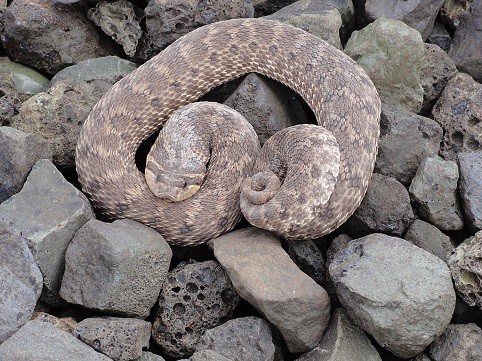
Western hognose snakes live primarily in the US midwest, stretching from southern Canada through to extreme northern Mexico. They measure 50-90cm, and already have adaptions in the form of enlarged rear teeth, which grip toads when they inflate into slippery balloon form. Their second, equally important adaption is a handy toxin resistance.
Bufotoxins in toads act by stopping a snake’s (and human’s) heart stone dead. Rather than causing chaos all over the body like a snake venom, they ruthlessly target the heart, the engine of most animals. Western hognose snakes have a simple system to counteract this: enlarged adrenal glands. After swallowing a western toad, they immediately release a large flood of adrenalin, restoring their heart rate, until the body metabolises the bufotoxins and the danger passes.
Without this adaption, western hognose snakes would be far less successful, and far more likely to go extinct, or be pushed back to a small corner of the USA where turtle eggs are constantly available. A 2016 study from Illinois found that western hognose snakes ate 51% turtle eggs and 23% toads, including the American toad, followed by lizards but no mammals.
| 2 | Common keelback |
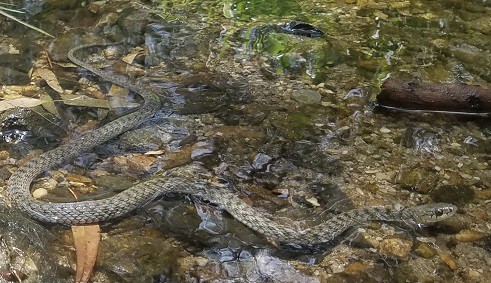
Officially the luckiest snake in Australia. The cane toad (Rhinella marina) is an invasive species native to Brazil, which was introduced to Australia in the 1930s to control beetle infestations in sugar plantations. It didn’t work, mainly because the bugs stayed high up the stalks, while cane toads stuck to the ground. What they did accomplish was a large fall in the snake population, as cane toad skins are coated with a deadly mixture of bufotoxins and bufadenolides. The likes of red-bellied black snakes prey on amphibians heavily, but have no natural resistance to the cane toad originating in a foreign country.
The lone exception was the common keelback. This is a harmless species of lakes and swamps, which normally flees when humans approach. Most keelbacks in the Tropidonophis family live in southeast Asia, where toads with bufotoxins are plentiful. The family as a whole is resistant, and when common keelbacks made the jump to Australia, they retained these resistant genes despite them being less necessary.
Cane toads think they’re in complete control of Australia, but they’ll get a shock if they hop into a lake containing a common keelback. This species is also resistant to toxic native frogs, like Dahl’s aquatic frog.
| 3 | Blue-necked keelback |
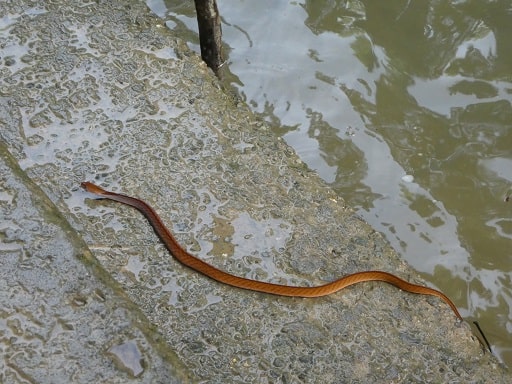
The blue-necked keelback can not only survive toad toxins, but repurpose them as weapons. This species is found in extreme southern Thailand, Malaysia, and parts of Indonesia. Its venom has neurotoxic symptoms like slurred words, dizziness and an unsteady gait, but must be chewed in to cause serious damage. This is the cousin of the red-necked keelback, but far rarer and more elusive, with little detailed research. What’s known is that like its relative, blue-necked keelbacks mainly prey on frogs and toads, and are resistant to their deadly bufotoxins.
One poisonous species they overlap with in Malaysia is the Asian common toad (Duttaphrynus melanostictus). After consumption, they store the white-coloured bufotoxins in nuchal glands in their neck, which burst when touched by a predator, e.g. bird talons. Red-necked keelbacks can even fire stored bufotoxins at humans from a distance, and it’s assumed that blue-necked keelbacks can do the same.
Blue-necked keelbacks are mainly found in lowland forests. Because of their love for toads, they occur near water sources like streams, flooded fields and standing forest pools. Finding this snake is a lucky experience for herpers. Getting sprayed in the face is even luckier (or unlucky, depending on how you view it).
| 4 | False habu |
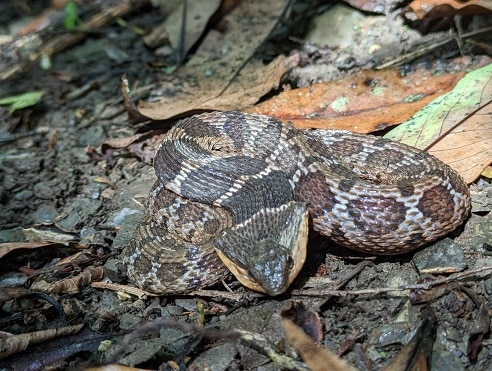
A 60-100cm species of southeast China and Taiwan. False habus (Pseudagkistrodon rudis) are found in moist meadows and forests on the edges of streams. This snake is a viper mimic, with subtle beige colours and a wide triangular head. This is one of many subtle advantages that keeps the species alive, and another is bufotoxin resistance.
This species is known to prey primarily on amphibians. In a 2012 study, the false habu flecked its tongue most aggressively when exposed to toad scents, with two frogs enticing the second most flecks, and mammals, reptiles and birds far behind. The specific toad was the Japanese common toad (Bufo japonicus), a poisonous species riddled with bufotoxins, which is even toxic in the egg stage.
False habus can swallow toads without its heart stopping, similarly to its distant cousin the red-necked keelback. Scientists theorise that they store toad toxins in their liver, as a defence against large predators. Though few westerners have heard of them, Pseudagkistrodon rudis is a common species in eastern Asia, with a “least concern” conservation tag.
| 5 | Wagler’s snake |
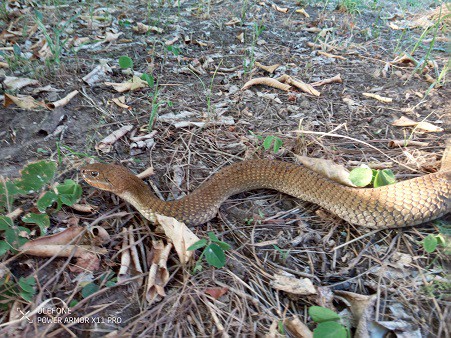
A highly bufophagous (toad-eating) snake of eastern and southern Brazil. Wagler’s snake measures under 1 metre, and mainly appears in open areas, avoiding the Amazon rainforest, but appearing in Atlantic forests and sweeping cerrado savannah.
Despite a lack of venom or savage fangs, Wagler’s snake (Xenodon merremi) has managed to become extremely widespread. An advantage they possess is resistance to bufotoxins found in toads, granting them access to a food source which other snake’s can’t contemplate. One sighting happened in Rio Grande do Norte, eastern Brazil, where a Wagler’s snake seized a common lesser toad (Rhinella granulosa) on a sunny trail. It grabbed the toad by the hind legs and swallowed without hesitation. This is a close relative of the infamously toxic cane toad.
Like hognose snakes, Xenodon meremmi possesses enlarged adrenal glands, which keep its heart rate steady after consuming bufotoxins. Wagler’s snake possesses no venom, but is an extremely close mimic of its neighbour the crossed pitviper. When threatened, Wagler’s snake rears its chest up and hisses to create a false impression of deadliness.
| 6 | Terrestrial garter snake |
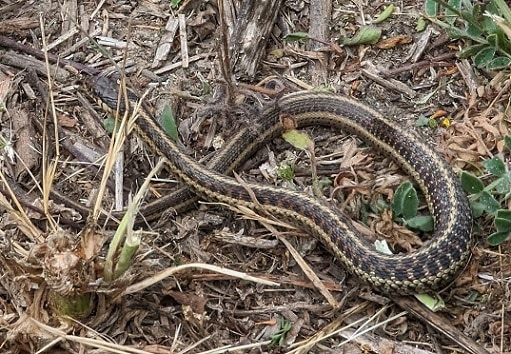
Resistance to toad bufotoxins is widespread in the garter snake (Thamnophis) family. Common garter snakes and aquatic garter snakes all boast a helpful armour, and even in species that don’t eat toads, such as Butler’s garter snakes, the genetic mutations are still detectable.
The terrestrial garter snake is the most land-dwelling garter snake, eating more mammals while keeping a healthy serving of toads as well. A 2017 study confirmed that they have elevated levels of ATP1a3, a gene which prevents the important NKA enzyme from being disabled. Most tellingly, levels were elevated in heart tissue, which bufotoxins target, compared to lung, kidney and gut tissue.
This allows terrestrial garter snakes to swallow toxic toads without concern. They may slow down for several days, becoming lethargic and still while their body metabolises the toxins, but they’ll soon be on their way again, with their calorie stores replenished. Toxic toads in the USA include the American toad (Anaxyrus americanus), western toad (Anaxyrus boreas), and invasive cane toad, which is found mainly in Florida.
| 7 | Diamondback watersnake |
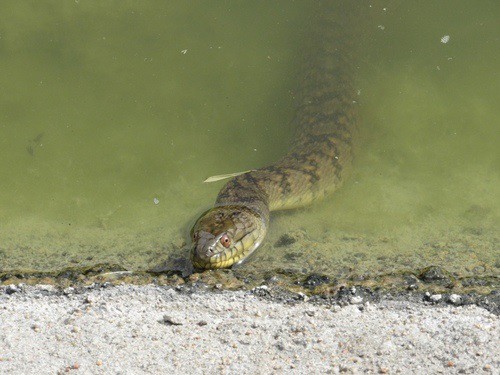
Diamondback watersnakes live in the central USA and are extremely common in slow-moving rivers, streams and ponds. They’re non-venomous, though with an aggressive personality, and reach a maximum length of 180cm. One of their skills is the ability to eat toxic toads without their hearts stopping.
Nerodia rhombifer was the subject of a great comparison experiment. It was fed doses of the bufadienolide Gamabufotalin in comparison with gopher snakes, which have no resistance. Gopher snakes rolled over and died rapidly, but it took 20 times the quantity to cause harm in diamondback watersnakes. Nerodia rhombifer is somewhat wasting its resistance, as its main food supply is actually fish, with a side helping of amphibians like American bullfrogs. Toads are only an occasional meal, yet it can still swallow them without harm.
Meanwhile, their brown watersnake cousin has been witnessed eating cane toads without harm, both in the wilds of Florida and in the laboratory. This isn’t a species with enlarged adrenal glands, so it’s likely that the Nerodia family has resistance at the genetic level.
| 8 | Spotted night adder |
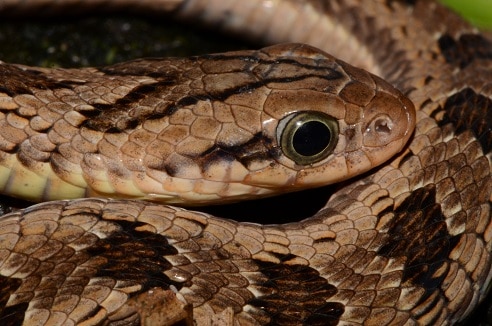
For our next snake, we cross the Atlantic, travel thousands of miles and reach the wilds of Africa. The spotted night adder (Causus maculatus) averages at 30-60cm, and is a patient venomous species rather than a charging maniac. It inhabits a wide variety of habitats, including woodlands and savannahs, but particularly gravitates towards moist areas with streams. The reason – this viper is heavily reliant on toads and frogs. One of their favourite prey is that flat-backed toad, AKA Bufo maculatus. Resistance to bufadenolides/bufotoxins is confirmed at the genetic level.
Bufadenliodes work by binding to an enzyme called Na+/K+-ATPase (simplified to NKA) in cell membranes. Without this enzyme, calcium ions surge, increasing the contraction time of the heart and slowing the heart rate overall. It’s a simple yet deadly mechanism, and most resistant snakes have similar mutations in the NKA enzyme which prevent bufotoxins from binding to them. This is accomplished with just a couple of amino acid substitutes. The spotted night adder is another member of this club.
Bufotoxin resistance is rare for vipers, but Causus maculatus is weird in many ways, as it’s a rare viper to lay eggs. Spotted night adders are found in western and central Africa, particularly Nigeria.
| 9 | Brazilian smooth snake |
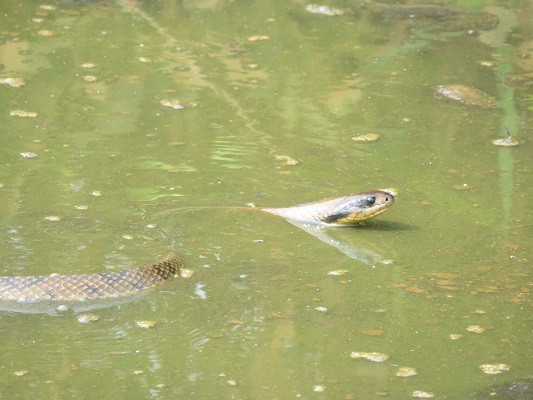
The Brazilian smooth snake is a large, thuggish species which patrols Amazon rainforest rivers and swallows up anything that gets in its way. That said, a cocky attitude won’t save you if toad toxins are binding to enzymes in your heart and preventing it from beating. Fortunately, this species has bufotoxin resistance, conferred by the same mutations in the NKA enzyme as others.
A study from Argentina found that their diet includes Rhinella schneideri, or the Roroco toad (formerly known as Bufo paracnemi). Most importantly, the smooth snake observed didn’t roll over and die. This toad is confirmed to secrete poisonous steroids and alkaloids in its skin, and is even believed to have potential as an insecticide.
The Brazilian smooth snake relies heavily on amphibians overall. A study from northeast Argentina found a dietary makeup of 41.4% amphibians, 20% reptiles, 15.7% fish and 14.3% mammals, so it makes sense to hang onto the resistance genes.
| 10 | Grass snake |
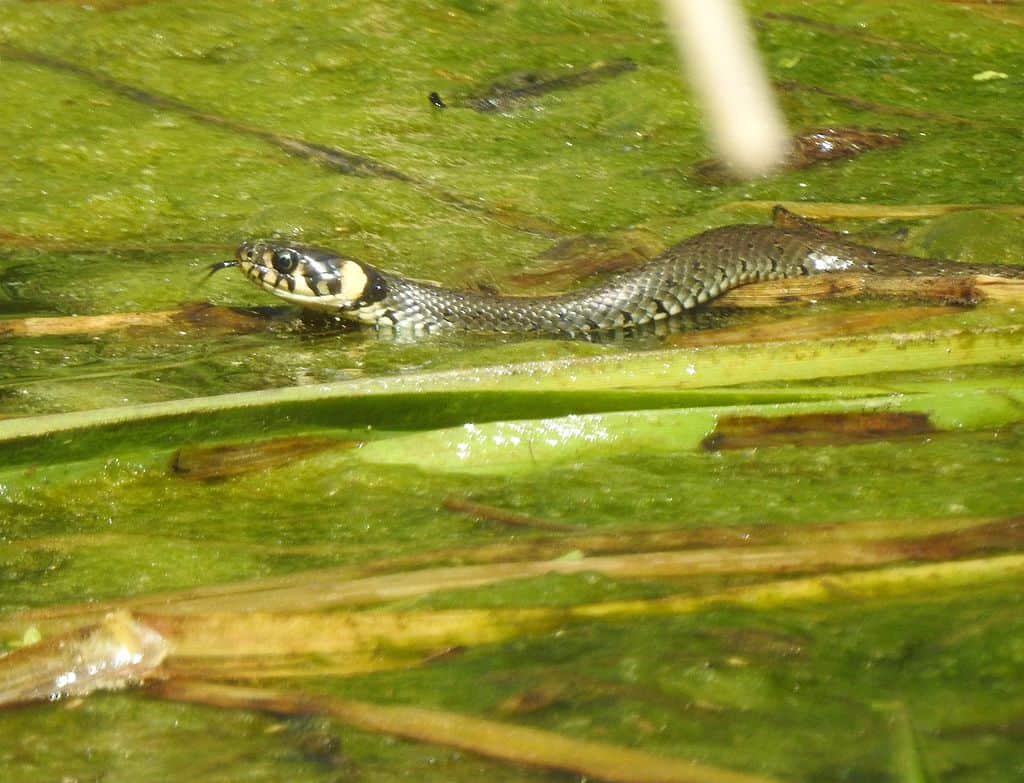
While adders and asp vipers would get sick and die slowly if they ate a European toad, the grass snake (Natrix natrix) seems to be immune. Living in the leafy English countryside, there’s an enormous amount of observations of this species, and eating deadly toads is one behaviour people have noticed.
Grass snakes eat over 80% amphibians, and their physiology has evolved to make this possible. They’re proven to have mutations in the genes for NKA enzymes, similarly to US garter snakes to which they’re distantly related, which prevent bufotoxins from binding to receptors in the heart cell membranes. Other Natrix members possess the mutations too: the dice snake of eastern Europe, which mainly eats fish and occasionally toads, and the viperine watersnake, which almost never eats toads. Grass snakes are the species to use this resistance most in their daily lives.
This is a semi-aquatic species, which is commonly found in ponds amid floating lilypads and tadpoles. In Spain, their poisonous prey includes the Iberian spiny toad (Bufo spinosus). European green toads (Bufotes viridis) are another confirmed prey.
